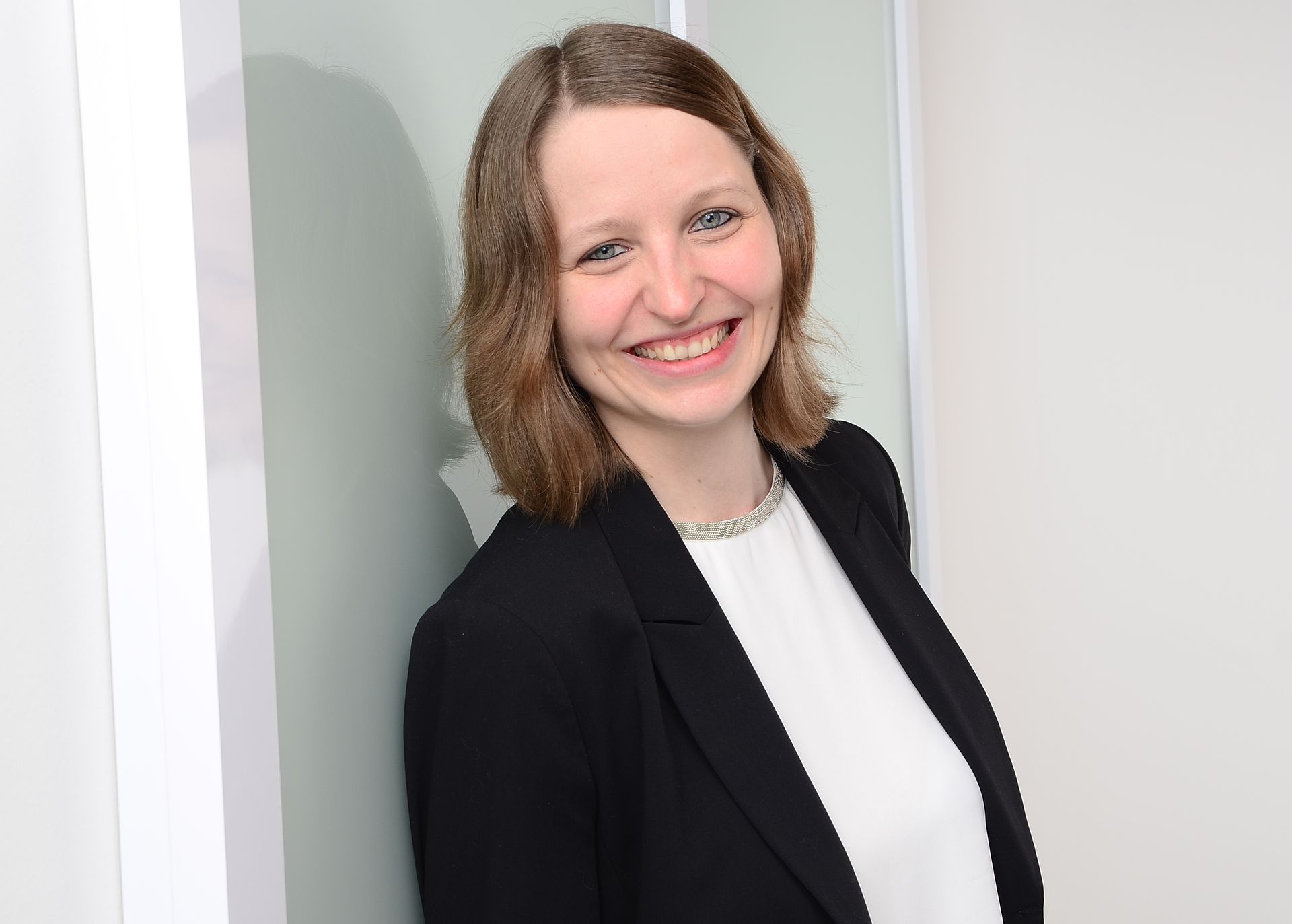Her mission: Checking, testing, inspecting. Recognizable by: A green lab coat. Her name: Viktoria Schöneich. In her green lab coat, the graduate aerospace engineer regularly mixes with the AIT employees in the OHB integration hall and checks whether all the work and production steps meet the high quality standards required. This is because before a satellite can start operating in orbit and deliver data to space agencies, scientists and space enthusiasts, it undergoes a tightly meshed testing procedure. In the latest part of our We.OHB series, Viktoria Schöneich talks about her job profile, her passion and why curiosity plays an important role in all of this.
Obviously, satellites must be tested before they are placed in orbit. What contribution do quality engineers make to this?
Viktoria Schöneich: On the one hand, I am an inspector and look over the shoulders of the AIT employees who integrate and test the satellites during many work and documentation steps. The aim is to make sure that the high quality standards stipulated by the customer are adhered to. For example, there is a prescribed level of torque for each screw; we carry out inspections for each work step and supervise the procedures. It’s great working so close to the flight hardware and knowing that the spacecraft you’re standing next to will soon be orbiting in space.
On the other hand, I oversee internal processes and knowledge management. For example, I have written a wiki with my working students explaining the inspection procedure and how the components function. This now helps quality assurance staff as well as other employees here at OHB. We also accompany the environmental tests that the satellite undergoes. I will soon be traveling with our Galileo satellites to the European Space Agency testing centre in Noordwijk, Netherlands. I’m really looking forward to that.
And what happens then at the test center?
During environmental impact testing, the satellite is placed in a chamber that simulates space conditions. This tells us whether the satellite can cope with the harsh conditions of outer space. In addition, the solar panels are attached and extended for the first time. Experiencing this is really rather special.
Has the pandemic changed the way you work?
Well, obviously, I can’t just take the satellite home to work on it there The quality team and, of course, the AIT staff have been on site from the outset. We have reduced the risk of infection by working on a physically separate basis and in alternate shifts. However, I am pleased that the situation is now slowly easing.
OHB recently launched an internal ideas competition. You submitted an entry on asteroid defense …
I’m a really inquisitive person and love to discover new things and immerse myself in a topic. In my spare time, I developed an idea for a feasibility study on asteroid defense for the competition. OHB is already involved in this area through the Hera mission, but my proposal is exploring ways of additionally improving the defense system. I think it’s great that this competition is giving me an opportunity to look at subjects outside my area of work. Aside from Venus, asteroids are one of my favorite topics and I already have ideas for a new competition.
You completely identify with the subject, don’t you?
Yes, everyone who knows me says the same thing. I think astronomy, physics and technology are incredibly exciting and see education as a form of entertainment. This fascination arose in my childhood. By the time I was five years old, I had already memorized the names of the planets in our solar system. Later on at school, however, I wasn’t aware that a career in space was even possible. But when I found out, my math grades finally started improving. I subsequently studied aerospace engineering in Stuttgart. At first I wanted to do my doctorate in Göttingen, but it’s common knowledge that working conditions are difficult with a doctorate. And what I really wanted to do was to develop something and really be able to touch something that orbits space. Fortunately, this is precisely what I have been able to do at OHB for over two years.



